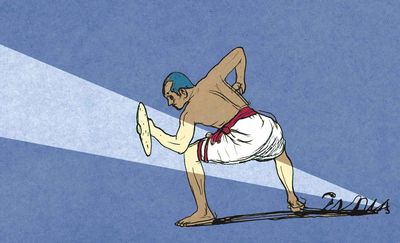A brand, the marketing gurus tell us, is a symbol embodying all the key information about a product or a service. When the brand is mentioned, it carries with it a whole series of associations in the public mind, as well as expectations of how it will perform. The brand can be built up by skilful advertising, so that certain phrases or moods pop up the moment one thinks of the brand; but ultimately, the only real guarantee of the brand’s continued worth is the actual performance of the product or service it stands for. If the brand delivers what it promises, it becomes a great asset in itself. Properly managed, the brand can increase the perceived value of a product or service in the eyes of the consumer. Badly managed, a tarnished brand can undermine the product itself.
So can India be a brand? A country isn’t a soft drink or a cigarette, but its very name can conjure certain associations in the minds of others. This is why our first prime minister Jawaharlal Nehru insisted on retaining the name ‘India’ for the newly independent country despite resistance from nativists who wanted it renamed ‘Bharat’. ‘India’ had a number of associations in the eyes of the world: it was a fabled land, much sought after by travellers and traders for centuries, the 'jewel in the crown' of the British Empire. Nehru wanted people to understand that the India he was leading was heir to that precious heritage. He wanted, in other words, to hold on to the brand.
As 21st century India transformed itself economically from a lumbering elephant to a bounding tiger, it needed a fresh brand image to keep up with the times. At the World Economic Forum’s 2006 session in Davos, where India was the guest of honour, ‘India: Fastest-growing free market democracy’ was emblazoned all over the Swiss resort. Brand India was born.

The importance of Brand India lies in the fact that India’s claims to a significant role in the world of the 21st century lie in the aspects and products of Indian society and culture that the world finds attractive—from our natural beauty to the richness of our cultural heritage, from Ayurveda to Bollywood, yoga to IT. Our strength lies in our ‘soft power’, which is not about conquering others but about being yourself. Some of it comes from government initiatives and salesmanship, but a country’s brand is also judged by the ways in which it is perceived as a result of news stories in the global mass media.
Branding isn’t just what we can deliberately and consciously put on display; it is rather how others see what we are. So if India wants to be a source of attraction to others, its internal narrative must live up to its global branding. We can’t hope to project India in terms of democracy, pluralism and Mahatma Gandhi if intolerance and communalism are raging rampant at home.
In the information age, it is not the side with the bigger army, but the one with the better story, that wins. India must remain the 'land of the better story'. For this, we must preserve the pluralism that is such a civilisational asset in our globalising world. If Brand India is undermined by accounts of mounting intolerance and government-condoned bigotry, all of us lose. India cannot succeed in a world that perceives us as a country where it is safer to be a cow than a Muslim.

